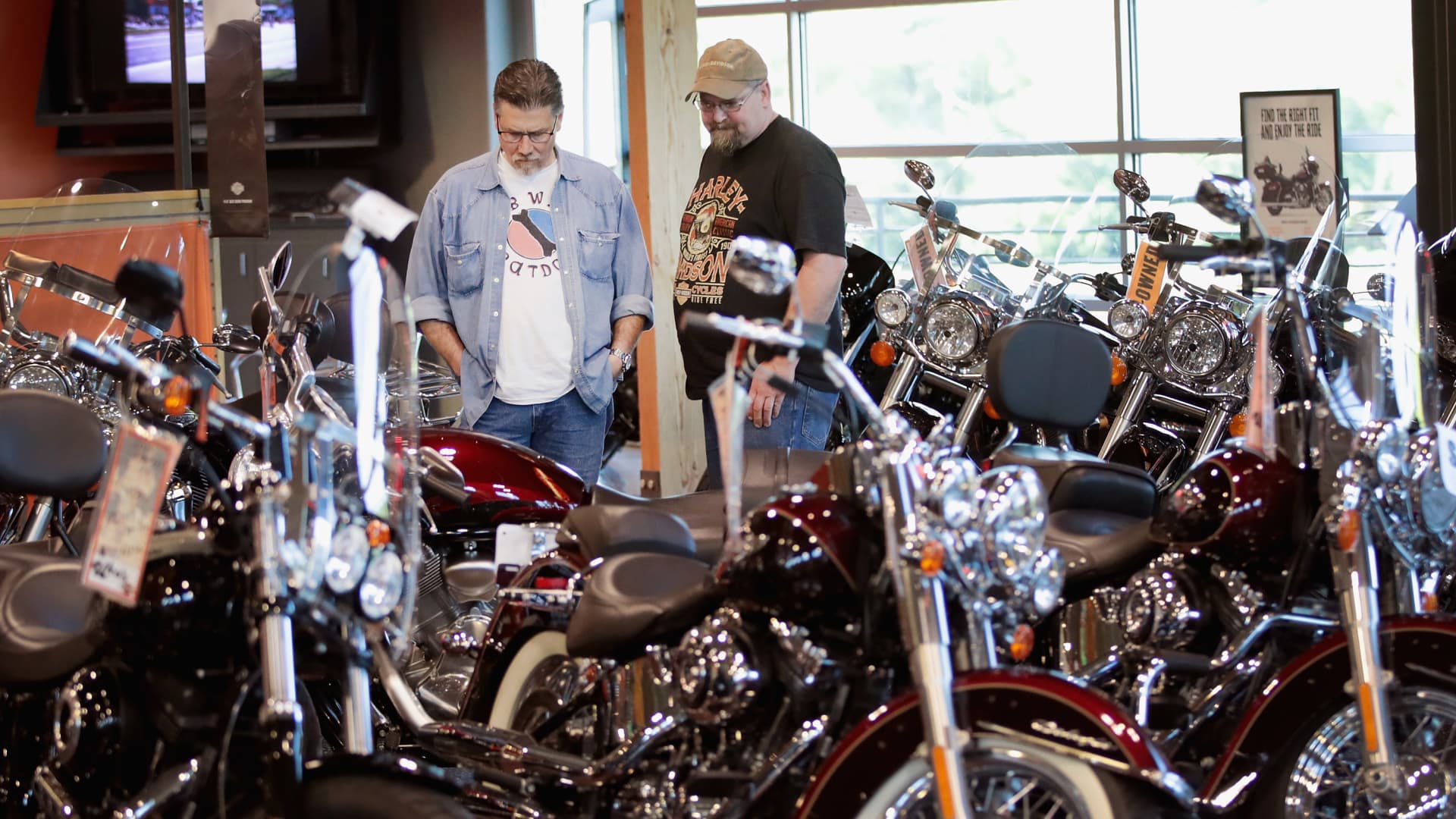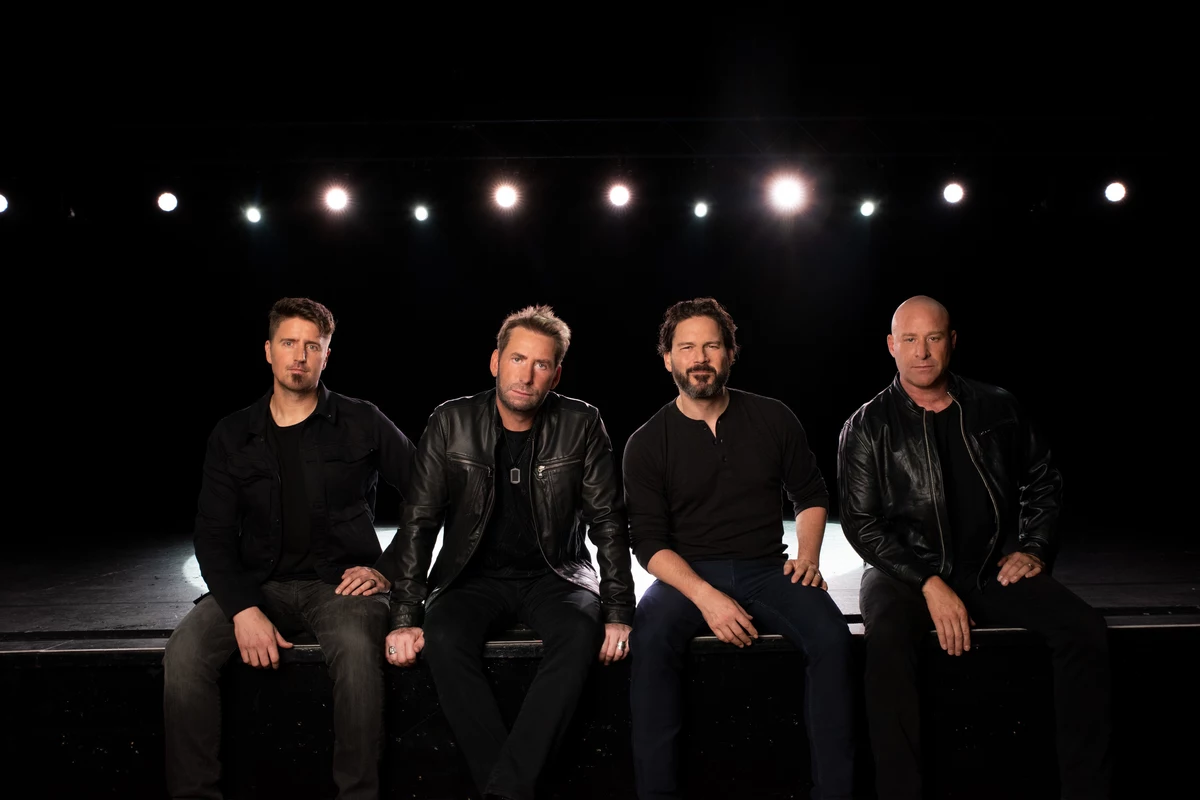Harley-Davidson may struggle to expand its customer base more than investors expect, Jefferies warned Tuesday. Analyst Anna Glaessgen initiated coverage of the stock as underperform with a price target of $39, which implies downside of 18.6% over from Monday’s close. Harley-Davidson shares dipped 1.7% in the premarket. “Simply put, we lack confidence in the go-forward demand trajectory for heavyweight motorcycle segments,” she said in a note to clients. “We see the ‘aging out’ thesis as tired (‘aging in’ is a commonly overlooked nuance), though we don’t see a clear catalyst for an acceleration in ridership growth through 2030 as outlined by management at the May analyst day.” The brand has come to define American motorcycles, with demand this year driven by the long-cruiser lifestyle. Glaessgen said Harley-Davidson has sold a certain “lifestyle” that aligns with American ideals that has created loyalists. In the fourth quarter, Harley-Davidson shares have shot up 38%, outpacing the S & P 500’s 10.4% gain. The company has also seen margin improvement that some argue is providing meat to the argument of a turnaround, Glaessgen said. Harley-Davidson has surged 27.1% in 2022, making it one of few non-energy stocks to post double-digit positive growth in a year defined by large drops. New management that has cut costs and improved markets and per-unit profit has helped investors believe in the stock and gravitate towards a narrative of it bucking broadly bearish market sentiment, Glaessgen said. But Glaessgen said “the recent retail inflection lacks legs,” noting those who are bullish on the stock underestimate the challenge of growing its consumer base. She is specifically concerned about company projections showing growth to the consumer base going forward will come in part from expansion in e-motorcycles, as the company forecasts more than 100,000 units in 2026. That’s considered too “optimistic” considering the company registered under 200,000 new motorcycles in total in 2021. “We believe ridership growth and expansion beyond the core will be easier said than done,” she said. “We see outsized execution risk to significant strategic shift stemming from Harley’s loyal base, who like Harley just the way it is.” The company expects more than 700,000 gross adds per year in 2022 through 2023 compared to around 600,000 in 2012 through 2021, so a miss on e-motorcycles could sink broader growth expectations. These growth hopes will likely also be tempered by increased competition in the e-motorcycle division as well as consumer spending changes during a recessionary period. Consumers already have increasingly shifted spending away from big-ticket goods to services after two years of pandemic-induced buying. And many have rolled back spending as concerns over inflation and a potential recession mount. — CNBC’s Michael Bloom contributed to this report.
Harley-Davidson shares could fall nearly 20% as growth story ‘lacks legs,’ Jefferies says
Related Posts
RECENT POSTS
Browse by Category
- Books (1)
- Business (3,597)
- Events (2)
- Fashion (5,633)
- Horror (1)
- Interviews (28)
- Movies (5,629)
- Music (5,664)
- News & Gossip (6,310)
- Television (5,662)
- Uncategorized (1)
- Video Of The Day (914)
POPULAR POSTS
READERS' PICKS
EDITOR'S PICKS
© 2022 EssentiallyHollywood.com - All Rights Reserved


























































![Mason Ramsey – Twang [Official Music Video] Mason Ramsey – Twang [Official Music Video]](https://i.ytimg.com/vi/xwe8F_AhLY0/maxresdefault.jpg)






















